Liraglutide ameliorates inflammation and fibrosis by downregulating the TLR4/MyD88/NF-κB pathway in diabetic kidney disease
- PMID: 39133777
- PMCID: PMC11483077
- DOI: 10.1152/ajpregu.00083.2024
Liraglutide ameliorates inflammation and fibrosis by downregulating the TLR4/MyD88/NF-κB pathway in diabetic kidney disease
Abstract
Inflammation and fibrosis play important roles in diabetic kidney disease (DKD). Previous studies have shown that glucagon-like peptide-1 receptor (GLP-1R) agonists had renal protective effects. However, the mechanisms are not clear. The present study explored the effect of liraglutide (LR), a GLP-1R agonist, on the downregulation of glomerular inflammation and fibrosis in DKD by regulating the Toll-like receptor (TLR)4/myeloid differentiation marker 88 (MyD88)/nuclear factor κB (NF-κB) signaling pathway in mesangial cells (MCs). In vitro, rat MCs were cultured in high glucose (HG). We found that liraglutide treatment significantly reduced the HG-mediated activation of the TLR4/MYD88/NF-κB signaling pathway, extracellular matrix (ECM)-related proteins, and inflammatory factors. A combination of TLR4 inhibitor (TAK242) and liraglutide did not synergistically inhibit inflammatory factors and ECM proteins. Furthermore, in the presence of TLR4 siRNA, liraglutide significantly blunted HG-induced expression of fibronectin protein and inflammatory factors. Importantly, TLR4 selective agonist LPS or TLR4 overexpression eliminated the improvement effects of liraglutide on the HG-induced response. In vivo, administration of liraglutide for 8 wk significantly improved the glomerular damage in streptozotocin-induced diabetic mice and reduced the expression of TLR4/MYD88/NF-κB signaling proteins, ECM protein, and inflammatory factors in renal cortex. TLR4-/- diabetic mice showed significant amelioration in urine protein excretion rate, glomerular pathological damage, inflammation, and fibrosis. Liraglutide attenuated glomerular hypertrophy, renal fibrosis, and inflammatory response in TLR4-/- diabetic mice. Taken together, our findings suggest that TLR4/MYD88/NF-κB signaling is involved in the regulation of inflammatory response and ECM protein proliferation in DKD. Liraglutide alleviates inflammation and fibrosis by downregulating the TLR4/MYD88/NF-κB signaling pathway in MCs.NEW & NOTEWORTHY Liraglutide, a glucagon-like peptide-1 receptor agonist (GLP-1RA), has renoprotective effect in diabetic kidney disease (DKD). In DKD, TLR4/MYD88/NF-κB signaling is involved in the regulation of inflammatory responses and extracellular matrix (ECM) protein proliferation. Liraglutide attenuates renal inflammation and overexpression of ECM proteins by inhibiting TLR4/MYD88/NF-κB signaling pathway. Therefore, we have identified a new mechanism that contributes to the renal protection of GLP-1RA, thus helping to design innovative treatment strategies for diabetic patients with various complications.
Keywords: TLR4/MyD88/NF-κB; diabetic kidney disease; extracellular matrix; inflammation; liraglutide.
Conflict of interest statement
No conflicts of interest, financial or otherwise, are declared by the authors.
Figures
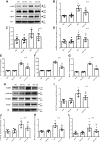
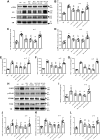
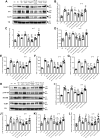
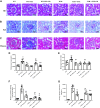

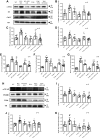

Similar articles
-
1,25(OH)2D3 provides protection against diabetic kidney disease by downregulating the TLR4-MyD88-NF-κB pathway.Exp Mol Pathol. 2020 Jun;114:104434. doi: 10.1016/j.yexmp.2020.104434. Epub 2020 Mar 30. Exp Mol Pathol. 2020. PMID: 32240615
-
Liraglutide suppresses production of extracellular matrix proteins and ameliorates renal injury of diabetic nephropathy by enhancing Wnt/β-catenin signaling.Am J Physiol Renal Physiol. 2020 Sep 1;319(3):F458-F468. doi: 10.1152/ajprenal.00128.2020. Epub 2020 Jul 27. Am J Physiol Renal Physiol. 2020. PMID: 32715762
-
Expression and cellular distribution of TLR4, MyD88, and NF-κB in diabetic renal tubulointerstitial fibrosis, in vitro and in vivo.Diabetes Res Clin Pract. 2014 Aug;105(2):206-16. doi: 10.1016/j.diabres.2014.04.020. Epub 2014 Apr 28. Diabetes Res Clin Pract. 2014. PMID: 24894085
-
Diabetic Nephropathy: Pathogenesis, Mechanisms, and Therapeutic Strategies.Horm Metab Res. 2025 Jan;57(1):7-17. doi: 10.1055/a-2435-8264. Epub 2024 Nov 21. Horm Metab Res. 2025. PMID: 39572154 Review.
-
Decoding nature: multi-target anti-inflammatory mechanisms of natural products in the TLR4/NF-κB pathway.Front Pharmacol. 2025 Jan 14;15:1467193. doi: 10.3389/fphar.2024.1467193. eCollection 2024. Front Pharmacol. 2025. PMID: 39877388 Free PMC article. Review.
Cited by
-
HOXD9/APOC1 axis promotes macrophage M1 polarization to exacerbate diabetic kidney disease progression through activating NF-κB signaling pathway.Hereditas. 2024 Nov 7;161(1):40. doi: 10.1186/s41065-024-00345-9. Hereditas. 2024. PMID: 39511608 Free PMC article.
-
Worldwide hotspots and trends in stem cell therapy for kidney disease in the last decade: a bibliometric and visualization analysis from 2015 to 2024.Front Immunol. 2025 Jul 21;16:1619291. doi: 10.3389/fimmu.2025.1619291. eCollection 2025. Front Immunol. 2025. PMID: 40761782 Free PMC article.
-
Trigonella foenum-graecum L. protects against renal function decline in a mouse model of type 2 diabetic nephropathy by modulating the PI3K-Akt-ERK signaling pathway.Front Pharmacol. 2025 Mar 18;16:1566723. doi: 10.3389/fphar.2025.1566723. eCollection 2025. Front Pharmacol. 2025. PMID: 40170727 Free PMC article.
-
Immune-mediated renal injury in diabetic kidney disease: from mechanisms to therapy.Front Immunol. 2025 Jun 4;16:1587806. doi: 10.3389/fimmu.2025.1587806. eCollection 2025. Front Immunol. 2025. PMID: 40534883 Free PMC article. Review.
References
MeSH terms
Substances
Grants and funding
LinkOut - more resources
Full Text Sources
Medical
Molecular Biology Databases

